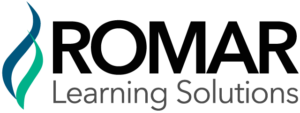
To teach adults new concepts and see better results more quickly, trainers must hone their instructional design and delivery. Romar Learning Solutions breaks down the 5 components of strong instructional delivery:
“The Why”
Trainers with strong instructional delivery understand that most adults want to know why they are learning something. “The why” motivates their desire to master new concepts and adopt new skills and approaches. To achieve the best results possible with adult learning, emphasize training objectives and the importance of continued education for improved operations.
Learning Goals with Real-World Applications
Learners cannot truly master new concepts until they understand the real-world applications—the how and when they apply what they’ve learned. Effective trainers offer meaning and context around hypothetical scenarios and the appropriate solutions to simulate what these real-world applications might look like.
Relatability
Adults are more likely to retain new information when they can relate to the content. Everyone has unique life experiences that have not only shaped them as people but have shaped their perspectives and learning styles. Therefore, trainers must know how to relate new material to learners’ life experiences and modify programs to meet specific developmental needs.
Interactive, Collaborative Approaches
We have a lot to learn from working with others—especially in a professional setting. Some of the most effective training programs are interactive and collaborative, allowing learners to bounce ideas off others and apply new skills in a group setting. Effective trainers understand that interactive, collaborative approaches to learning offer new perspectives and opportunities for improvement.
Hands-On Experience and Integration
Integration is one of the most important parts of learning new concepts and skills. After all, “if you don’t use it, you lose it!” Effective trainers understand the importance of offering learners opportunities to gain hands-on experience. If the training requires the adoption of new skills, it must include exercises that allow learners to utilize these skills. If learners aren’t taught how to integrate new skills, how can they be expected to do so upon completing their training?
Interested in developing adult learning programs that facilitate the effective transfer of knowledge and skills? Learn more about Romar’s training solutions or contact us today!




